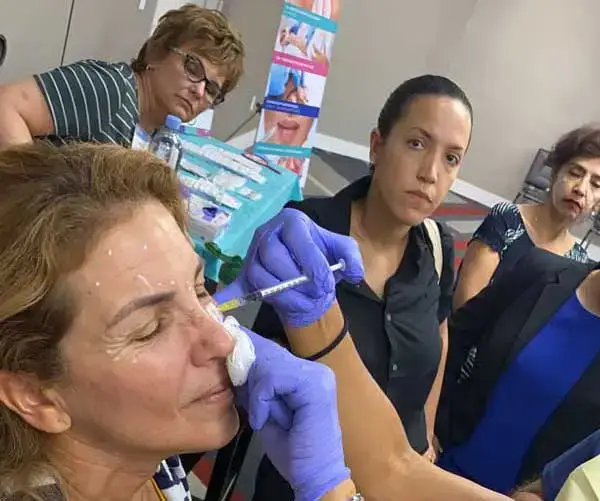Self Injecting Dermal Fillers: Why They're a Bad Idea
By Dr. Stephen Cosentino
PRESIDENT OF EMPIRE MEDICAL TRAINING
Dermal filler treatment is much more affordable than traditional plastic surgery. It’s much less risky as well.
Still, professional administration of FDA-approved fillers can cost hundreds if not thousands of dollars per session. And hyaluronic acid fillers, the most common and widely indicated type, last anywhere from 6 to 18 months. Annual treatment (if not twice-annual) is needed to maintain consistent results.
Encouraged by self-professed cosmetic medicine experts — in reality, social media influencers with no medical training — some patients try to save money by self injecting fillers. This is a bad idea all around, one that can cause more problems than it solves.
Self Injecting Dermal Fillers: Possible Risks
Dermal filler treatment is regarded as safe and effective when administered by trained aesthetic professionals. That second part — trained aesthetic professionals — is key. Self injecting fillers is more difficult than it appears, which means it’s risky for people without proper training.
Allergic Reactions to Dermal Fillers
Dermal filler allergies are rare, but they do occur. It’s not just the active ingredients you have to worry about — filler formulations can contain other substances that may trigger allergic reactions. And reactions are more likely when you purchase unregulated fillers online, which can contain unnecessary additives like silicone or harmful contaminants such as paraffin.
Allergic reaction severity can range from mild to life-threatening. Don’t chance it; seek immediate medical attention for symptoms like hives, facial swelling, or difficulty breathing.
Swelling, Bruising, and Other Unsightly Complications
Temporary complications such as swelling, bruising, redness, and itching around the injection site can occur after professional administration as well. But they’re much more common, and more likely to persist for days or become more severe, when you self inject.
Clotting, Necrosis, and Other Serious Complications
More serious self injection risks include:
- Blood clots caused by injection into blood vessels, which is much more likely with self administration
- Skin infection, which can cause more serious complications such as sepsis
- Necrosis, an infection complication that results in permanent skin death and scarring
These complications also require immediate medical attention.
Late-Onset Inflammatory Reactions
In very rare cases, late-onset inflammatory reactions can occur. Usually, these complications are not acute (meaning they don’t require hospitalization and aren’t life-threatening), but they’re still unpleasant and potentially unsightly.
And because they can occur weeks or months after treatment, it’s often not obvious what caused them. This is a marked contrast to rapid allergic reactions, which can occur while the patient is still in the exam room.
Why Do People Self Inject Dermal Fillers?
Given the risks, why does anyone self inject dermal fillers? The most common explanations include:
- Dermal filler treatment costs more in a clinical setting vs. buying the product online
- Treatment appointments take time, often during business hours
- New patient onboarding is even more time-consuming and may require one or more in-person consultations before treatment
- Injecting at home is more comfortable and familiar than in a clinical setting
- Sketchy influencers make self injection look easy and fun, but they don’t show the possible risks
These excuses are understandable. But the reality is that if you wouldn’t feel comfortable performing cosmetic surgery on yourself, you shouldn’t feel comfortable self injecting filler either. It’s worth the added time and expense to work with a trained professional.


